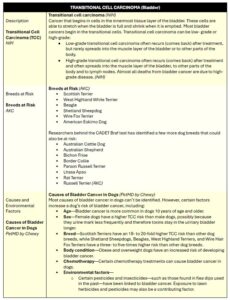Canine Transitional
Cell Carcinoma
(Bladder Cancer)
& Breeds at Risk
Research, Resources & Education
This website is based on research and is NOT created to diagnose your pet.
Each animal is an individual and may exhibit symptoms in a different way.
It is advised that you ALWAYS CHECK WITH YOUR VETERINARIAN for a proper diagnosis and treatment plan.
Please visit Lost Temple Fitness & Cancer for more information of cancer in humans including
What is Cancer and Treatments.
Table of Contents
Canine Bladder Cancer
Urinary bladder / Transitional Cell Carcinoma (TCC) is an important neoplasm in dogs, Lymph node metastasis is reported in 16% of dogs with TCC at the time of diagnosis.
Symptoms: The most common clinical signs are hematuria, dysuria, and pollakiuria .
Breeds that are commonly affected include the Beagle, Border Collie, Scottish Deerhound and Whippet.
Treatments include Surgery, Chemotherapy, Radiation therapy, and Immunotherapy, but the optimal approach depends on several factors such as the location, stage, and grade of the tumor.
What Dogs are at Risk?
Some Dogs that are at Risk due to Genetic Predisposition

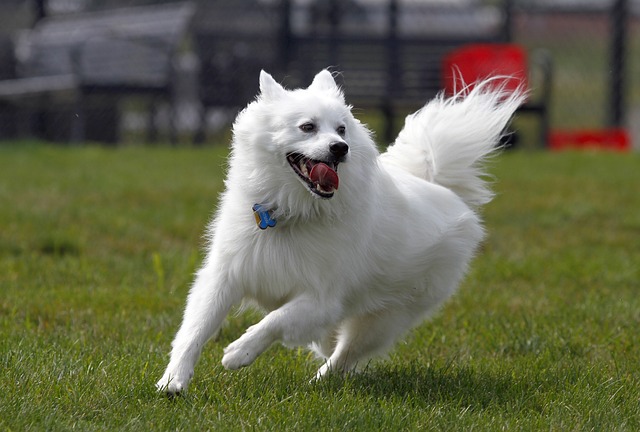
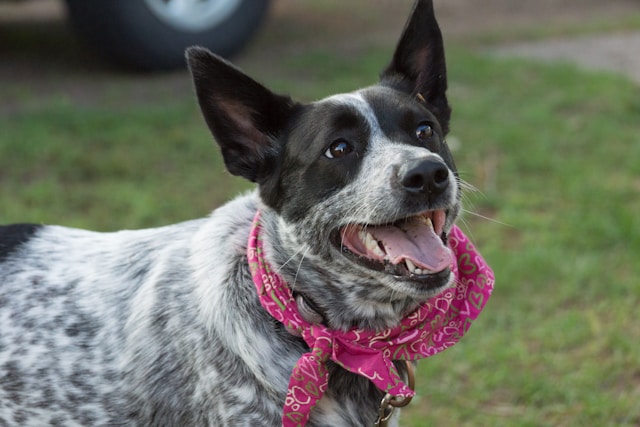




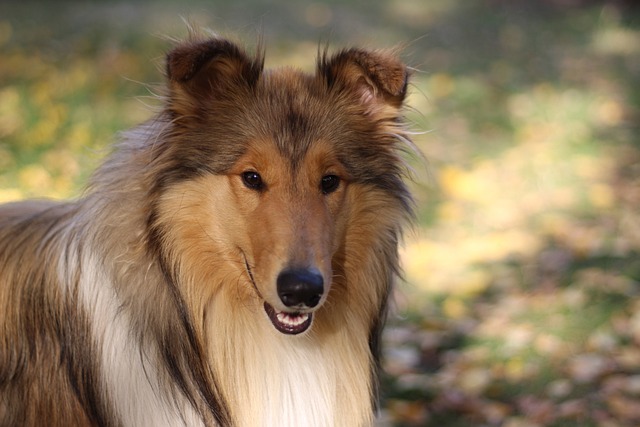


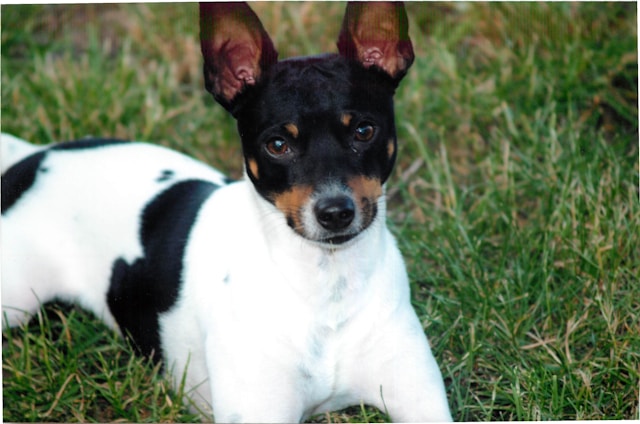
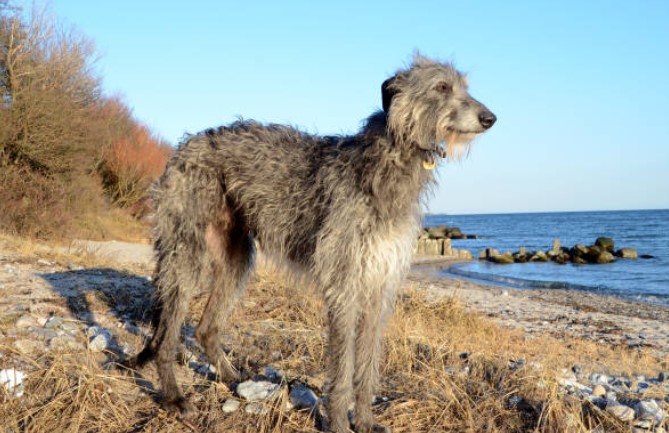




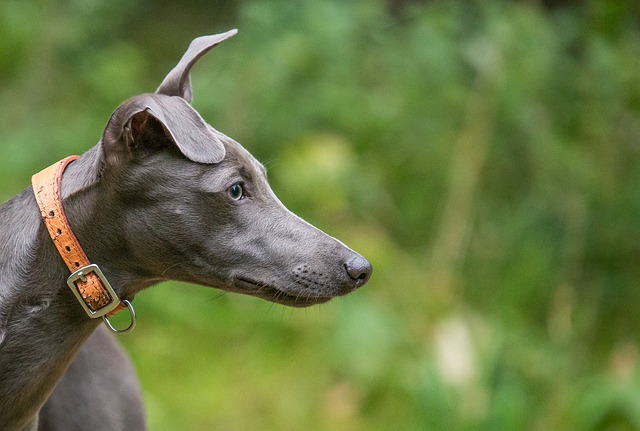

What is Bladder Cancer
Learn More about Bladder Cancer in Humans and General Information at Lost Temple Fitness Bladder Cancer.
What is Transitional Cell Carcinoma (NIH)
Transitional cell carcinoma (NIH)
Cancer that begins in cells in the innermost tissue layer of the bladder. These cells are able to stretch when the bladder is full and shrink when it is emptied. Most bladder cancers begin in the transitional cells. Transitional cell carcinoma can be low- grade or high-grade:
- Low-grade transitional cell carcinoma often recurs (comes back) after treatment, but rarely spreads into the muscle layer of the bladder or to other parts of the body.
- High-grade transitional cell carcinoma often recurs (comes back) after treatment and often spreads into the muscle layer of the bladder, to other parts of the body and to lymph nodes. Almost all deaths from bladder cancer are due to high-grade disease. (NIH)
Bladder Cancer Videos
YouTube Videos that help explain Bladder Cancer in Dogs
Disclaimer:
This is for research only and Lost Temple Pets does not endorse any video presented on this website.
It is advised that you ALWAYS CHECK WITH YOUR VETERINARIAN for a proper diagnosis and treatment plan.
Causes, Environment & BRAF Gene
Causes of Bladder Cancer in Dogs (PetMD by Chewy)
Causes of Bladder Cancer in Dogs (PetMD by Chewy)
Most causes of bladder cancer in dogs can’t be identified. However, certain factors increase a dog’s risk of bladder cancer, including:
- Age—Bladder cancer is more common in dogs 10 years of age and older.
- Sex—Female dogs have a higher TCC risk than male dogs, possibly because they urine mark less frequently and therefore toxins stay in the urinary bladder longer.
- Breed—Scottish Terriers have an 18- to 20-fold higher TCC risk than other dog breeds, while Shetland Sheepdogs, Beagles, West Highland Terriers, and Wire Hair Fox Terriers have a three- to five-times higher risk than other dog breeds.
- Body condition—Obese and overweight dogs have an increased risk of developing bladder cancer.
- Chemotherapy—Certain chemotherapy treatments can cause bladder cancer in dogs.
- Environmental factors—
- Certain pesticides and insecticides—such as those found in flea dips used in the past—have been linked to bladder cancer. Exposure to lawn herbicides and pesticides may also be a contributing factor.
- Additionally, some studies suggest that secondhand smoke can increase a dog’s bladder cancer risk. This is attributed to the carcinogens (cancer-causing substances) found in tobacco smoke, which, when inhaled, can be absorbed into the bloodstream. Once excreted in urine, these substances directly affect the bladder, potentially leading to damage and an elevated risk of bladder cancer. (PetMD by Chewy)
What Is the CADET Braf Test? (DogCancer.com)
What Is the CADET Braf Test?
A Cadet BRAF test is a urine test that detects whether a genetic mutation for TCC (transitional cell carcinoma, a common bladder cancer) is present.
Why Veterinarians Use the Cadet BRAF Urine Test (DogCancer.com)
The Cadet BRAF urine test is 95% accurate in detecting transitional cell carcinoma (TCC) that contains cells with the BRAF genetic mutation.
- Transitional cell carcinoma, or urothelial carcinoma (UC), is the most common type of canine bladder cancer.
- Bladder cancer in dogs is rare, comprising only 2% of all canine cancers.
- A negative Cadet BRAF urine test can mean either that it is not TCC or that it is a form of TCC that does not carry the mutation being tested for (BRAF), in which case further testing may be recommended. (DogCancer.com)
Should My Dog Get the CADET Braf Test? (AKC)
Should My Dog Get the CADET Braf Test? (AKC)
Although all breeds of dogs can develop bladder cancer, it is relatively rare. However, if you own a high-risk breed, it might be worth talking to your veterinarian about the CADET Braf test, especially as your dog enters his senior years.
- Dr. Arteaga recommends all at-risk breeds have the screening test after age 8, and Dr. Sigmon recommends that dogs over 6 years old with a history of multiple episodes of bloody urine get tested for bladder cancer.
- She also advises breeders of at-risk breeds to invest in an annual subscription of the CADET Braf Mutation Assay to help monitor bladder cancer within their breeding programs.
For more questions about your dog’s risk of bladder cancer and the CADET Braf test, talk to your veterinarian or visit SentinelBiomedical.com. (AKC)
Symptoms
Symptoms of Bladder Cancer in Dogs (First Vet)
Symptoms of Bladder Cancer in Dogs (First Vet)
- Straining to urinate
- Frequent urination
- Painful urination
- Blood-tinged urine
- Incontinenc
These symptoms are usually also seen in dogs with urinary tract infections. Antibiotics will initially improve the symptoms, but if cancer or another issue is present, recurrence occurs within a short span of time. (First Vet)
Testing / Diagnosis and Staging
How Bladder Cancer is Diagnosed in Dogs (First Vet)
How Bladder Cancer is Diagnosed in Dogs (First Vet)
More than 50% of dogs diagnosed with bladder cancer have TCC that involves the urethra. A tumor in the urethra can block urine flow, causing the affected pet to strain while attempting to urinate. If urine is unable to pass through, it can eventually lead to damage to the kidney and possibly kidney failure.
- The tumor usually develops in the lower neck of the urinary bladder, which makes surgical removal impossible. This causes a partial or complete obstruction to the flow of urine during urination. The tumor may be felt by a veterinarian through the abdomen wall if it’s already large.
- A digital rectal exam may also reveal tumors in the abdominal lymph nodes if metastasis has occurred. If the tumor has spread to the bones, lameness and/or bone pain can be observed.
After a thorough physical exam, your vet may recommend the following tests to confirm the initial findings:
- Urinalysis
Sometimes, the urine of dogs with TCC has cancer cells. However, urinalysis is unreliable when it comes to diagnosing bladder cancer because similar cells may appear during urinary tract infections.
- Blood work
Most dogs with TCC have normal blood work except when kidney function is already affected. But the blood work results can serve as baseline data when evaluating the effect of treatment options.
- Veterinary Bladder Tumor Antigen (VBTA) Test|
This test checks the urine of dogs for bladder cancer. However, false positives have been recorded in dogs with bladder infections.
- Imaging
Bladder tumors are rarely seen on abdominal x-rays unless they have spread to the bones. Chest x-rays are useful in determining whether bladder cancer has spread to the lungs.
- A cystogram may be helpful when the veterinarian suspects the spread of the tumor to the dog’s urethra. The procedure uses a special dye to make the tumor visible during x-rays.
- Abdominal ultrasound can help in assessing the tumor size within the urinary bladder and the size of adjacent lymph nodes.
- Tissue Biopsy
This is performed as a definitive test to diagnose TCC or other cancer of the urinary bladder. Cells may be collected via a surgical biopsy or a urinary catheter and examined microscopically.
- Cystoscopy can be used in female dogs.
The procedure involves inserting a camera into the bladder to visualize the tumor. Cystoscopy can also be used for tumor biopsy. (First Vet)
Tumor Staging for Bladder Cancer (First Vet)
Tumor Staging for Bladder Cancer (First Vet)
Once TCC is confirmed, “tumor staging” will follow to assess the extent of the tumor.
Purpose of Tumor Staging
- Help determine the best treatment regimen that will be followed
- Provide important information about the prognosis
- Establish baseline data regarding the tumor measurements. This can help determine if certain treatments that will be successful.
Tumor staging is achieved with the help of x-rays (radiographs), ultrasound, and CT scans to see if there is metastasis to the lungs, abdomen, lymph nodes, and other organs. These procedures can also evaluate changes in the kidneys as a result of urine flow obstruction. The exact location and the size of the tumor within the bladder can also be determined. (First Vet)
Treatment
Treatment (Merck Veterinary Manual)
Treatment (Merck Veterinary Manual)
- Excision of the tumor, if possible, is the most beneficial therapy. Transitional cell carcinomas are frequently located at the trigone of the bladder or in the urethra and may necessitate radical reconstructive surgery of the lower urinary tract.
- Radiation therapy and/or chemotherapy with piroxicam, cisplatin, doxorubicin, vinblastine, chlorambucil, or mitoxantrone will generally prolong the life of affected animals.
- Dogs with transitional cell carcinoma, including those being treated for the tumor, are predisposed to development of bacterial urinary tract infections, and routine urine cultures are indicated. (Merck Veterinary Manual)
Treatment Options for Bladder Cancer in Dogs (First Vet)
Treatment Options for Bladder Cancer in Dogs (First Vet)
The treatment regimen will depend on the information gathered from the various tests and procedures that have been performed.
Surgical Removal
Excision of the tumor is only possible when it’s located away from the neck of the bladder and urethra. The presence of important structures prevents surgical excision in this area.
Radiation Therapy
If surgical removal of the tumor is not possible, radiation therapy has been known to be successful at controlling the growth of the bladder tumor. The procedure, however, has its downsides and challenges. These include the following:
- Radiation can cause scarring and shrinking of bladder tissues.
- Irritation of surrounding organs
- The bladder, which is the primary target of radiation, changes shapes depending on the amount of urine in the bladder or when pressure is exerted on the bladder by adjacent organs.
Medications
Certain medications have been known to cause remission and cancer control in some dogs. These include piroxicam (a type of NSAID) and vinblastine (a chemotherapy drug).
Symptomatic Care
Since dogs with TCC are very prone to developing cystitis (bacterial infection in the bladder), there may be a need for frequent urinalysis, urine culture, and antibiotic treatment.
- If the flow of urine into and out of the bladder is obstructed, stents can be placed in the spot where the obstruction is located (ureters or urethra) to open up the passage and restore the urine flow. A cystotomy tube can also be placed to bypass a urethral obstruction and allow for proper emptying of the urinary bladder. (First Vet)
References
References
AKC American Kennel Club- Why Is Bladder Cancer More Likely in These Breeds?
By Anna Burke. Updated: Jun 05, 2019
https://www.akc.org/expert-advice/health/bladder-cancer-more-likely-breeds/
Dog Cancer.com – Cadet BRAF Urine Test
By Leah Talesnick, DVM, CCRP
Medically Reviewed by Amanda Hensley, DVM, MPH, CCRT, CVA
Updated on January 26, 2024
https://www.dogcancer.com/articles/diagnosis-and-medical-procedures/cadet-braf-urine-test/
First vet – Common Types of Bladder Cancer in Dogs
https://firstvet.com/us/articles/common-types-of-bladder-cancer-in-dogs
Merck Veterinary Manual – Neoplasia of the Urinary System in Small Animals
By Scott A. Brown, VMD, PhD, DACVIM. Reviewed/Revised Oct 2013
NIH – National Cancer Institute – What is Bladder Cancer?
https://www.cancer.gov/types/bladder
Pet MD by Chewy – Bladder Cancer in Dogs
By Jenny Alonge, DVM. Published Dec. 11, 2023
https://www.petmd.com/dog/conditions/cancer/bladder-cancer-dogs
Cancer/Breed Chart
| BREED | BRAIN | HEMANGIO- SARCOMA | LYMPHOMA | MAMMARY TUMORS | MAST CELL TUMOR | MELANOMA | NASAL TUMOR | ORAL | OSTEOSARCOMA | PERIANAL/ ANAL SAC | SOFT TISSUE SARCOMA | TRANSITIONAL (TCC) / UROTHELIAL (UC) |
|---|---|---|---|---|---|---|---|---|---|---|---|---|
| Airedale Terrier | Lymphoma | Melanoma | Nasal Tumor | Soft Tissue Sarcoma | TCC or UC | |||||||
| Basset Hound | Hemangiosarcoma | Lymphoma | Nasal Tumor | Soft Tissue Sarcoma | ||||||||
| Bulldog, English | Brain | Lymphoma | Mast Cell Tumor | Perianal/Anal Sac | Soft Tissue Sarcoma | |||||||
| Bullmastiff | Lymphoma | Mast Cell Tumor | Soft Tissue Sarcoma | |||||||||
| St. Bernard | Lymphoma | Osteosarcoma | Soft Tissue Sarcoma | |||||||||
| Golden Retriever | Brain | Hemangiosarcoma | Lymphoma | Mast Cell Tumor | Melanoma | Oral | Osteosarcoma | Perianal/Anal Sac | Soft Tissue Sarcoma | |||
| Labrador Retriever | Hemangiosarcoma | Lymphoma | Mast Cell Tumor | Melanoma | Nasal Tumor | Oral | ||||||
| Scottish Terrier | Brain | Lymphoma | Melanoma | Nasal Tumor | Oral | Soft Tissue Sarcoma | TCC or UC | |||||
| Boxer | Brain (Glioma) | Hemangiosarcoma | Lymphoma | Mammary Tumor | Mast Cell Tumor | Oral | Osteosarcoma | Soft Tissue Sarcoma | ||||
| Beagle | Hemangiosarcoma | Lymphoma | Mast Cell Tumor | Perianal/Anal Sac | TCC or UC | |||||||
| West Highland White Terrier | Lymphoma | |||||||||||
| Chow Chow | Lymphoma | Melanoma | Oral | |||||||||
| Poodle, Standard | Lymphoma | Melanoma | Nasal Tumor | Oral | ||||||||
| Rottweiler | Lymphoma | Oral | Osteosarcoma | |||||||||
| Poodle, Toy | Lymphoma | Mammary Tumor | Melanoma | Nasal Tumor | ||||||||
| Yorkshire Terrier | Lymphoma | Mammary Tumor | ||||||||||
| German Shepherd | Hemangiosarcoma | Lymphoma | Mammary Tumor | Melanoma | Nasal Tumor | Oral | Osteosarcoma | Perianal/Anal Sac | ||||
| Poodle, Miniature | Lymphoma | Mammary Tumor | Melanoma | Nasal Tumor | Oral | |||||||
| Affenpinscher | ||||||||||||
| Afghan Hound | ||||||||||||
| Alaskan Malamute | Perianal/Anal Sac | |||||||||||
| American Eskimo, Toy and Standard | ||||||||||||
| American Foxhound | ||||||||||||
| American Pitt Bull Terrier | Hemangiosarcoma | |||||||||||
| American Staffordshire Terrier | ||||||||||||
| American Water Spaniel | ||||||||||||
| Anatolian Shepherd Dog | ||||||||||||
| Australian Cattle Dog | TCC or UC | |||||||||||
| Australian Shepherd | TCC or UC | |||||||||||
| Australian Terrier | ||||||||||||
| Basenji | ||||||||||||
| Bearded Collie | ||||||||||||
| Beauceron | ||||||||||||
| Bedlington Terrier | ||||||||||||
| Belgian Groenendael | ||||||||||||
| Belgian Malinois | ||||||||||||
| Belgian Tervuren | ||||||||||||
| Bernese Mountain Dog | Hemangiosarcoma | Melanoma | Soft Tissue Sarcoma | |||||||||
| Bichon Frise’ | TCC or UC | |||||||||||
| Black and Tan Coonhound | ||||||||||||
| Black Russian Terrier | ||||||||||||
| Bloodhound | Soft Tissue Sarcoma | |||||||||||
| Boerboel | ||||||||||||
| Border Collie | Brain | TCC or UC | ||||||||||
| Border Terrier | ||||||||||||
| Borzoi | Osteosarcoma | |||||||||||
| Boston Terrier | Brain | Mast Cell Tumor | Melanoma | Soft Tissue Sarcoma | ||||||||
| Bouvier des Flandres | Soft Tissue Sarcoma | |||||||||||
| Briard | ||||||||||||
| Brussels Griffon | ||||||||||||
| Bull Terrier | Mast Cell Tumor | Melanoma | ||||||||||
| Bull Terrier, Miniature | Mast Cell Tumor | Melanoma | ||||||||||
| Cairn Terrier | ||||||||||||
| Canaan Dog | ||||||||||||
| Cane Corso (Italian Mastiff) | ||||||||||||
| Caucasian Shepherd | ||||||||||||
| Cavalier King Charles Spaniel | Perianal/Anal Sac | |||||||||||
| Chesapeake Bay Retriever | Melanoma | |||||||||||
| Chinese Crested | ||||||||||||
| Chinese Shar-Pei | Mast Cell Tumor | Soft Tissue Sarcoma | TCC or UC | |||||||||
| Clumber Spaniel | ||||||||||||
| Curly Coated Retriever | ||||||||||||
| Dalmation | Hemangiosarcoma | |||||||||||
| Dandie Dinmont Terrier | ||||||||||||
| Dogo Argentino | ||||||||||||
| Dogue de Bordeaux | ||||||||||||
| English Foxhound | ||||||||||||
| English Toy Spaniel AKA King Charles Spaniel | ||||||||||||
| Field Spaniel | ||||||||||||
| Finnish Spitz | ||||||||||||
| Flat-Coated Retriever | Hemangiosarcoma | |||||||||||
| Fox Terrier, Smooth | Mast Cell Tumor | |||||||||||
| Fox Terrier, Toy | Mast Cell Tumor | |||||||||||
| Fox Terrier, Wire | TCC or UC | |||||||||||
| French Bulldog | ||||||||||||
| German Pinscher | ||||||||||||
| German Wirehaired Pointer | ||||||||||||
| Glen of Imaal Terrier | ||||||||||||
| Great Dane | Brain | Osteosarcoma | Soft Tissue Sarcoma | |||||||||
| Great Pyrenees | ||||||||||||
| Greater Swiss Mountain Dog | ||||||||||||
| Greyhound | Brain (Meningioma) | Hemangiosarcoma | Osteosarcoma | Soft Tissue Sarcoma | ||||||||
| Harrier | ||||||||||||
| Havanese | ||||||||||||
| Ibizan Hound | ||||||||||||
| Irish Terrier | ||||||||||||
| Irish Water Spaniel | ||||||||||||
| Irish Wolfhound | Osteosarcoma | |||||||||||
| Italian Greyhound | Brain | Hemangiosarcoma | ||||||||||
| Japanese Chin | ||||||||||||
| Keeshond | Nasal Tumor | |||||||||||
| Kerry Blue Terrier | ||||||||||||
| Komondor | ||||||||||||
| Kuvasz | ||||||||||||
| Lakeland Terrier | ||||||||||||
| Leonberger | Osteosarcoma | |||||||||||
| Lhasa Apso | TCC or UC | |||||||||||
| Lowchen | ||||||||||||
| Manchester Terrier Toy | ||||||||||||
| Manchester Terrier, Standard | ||||||||||||
| Mastiff | Brain | |||||||||||
| Miniature Pincher | ||||||||||||
| Neapolitan Mastiff | ||||||||||||
| Newfoundland | ||||||||||||
| Norfolk Terrier | ||||||||||||
| Norwegian Buhund | ||||||||||||
| Norwegian Elkhound | Brain | Nasal Tumor | ||||||||||
| Norwich Terrier | ||||||||||||
| Nova Scotia Duck Tolling Retriever | ||||||||||||
| Old English Sheepdog | Brain | |||||||||||
| Otterhound | ||||||||||||
| Papillon | ||||||||||||
| Parsons Russell Terrier | TCC or UC | |||||||||||
| Pekingese | Brain | |||||||||||
| Petit Basset Griffon Vendeen (PBGV) | ||||||||||||
| Pharaoh Hound | ||||||||||||
| Plott Hound | ||||||||||||
| Polish Lowland Sheepdog | ||||||||||||
| Pomeranian | ||||||||||||
| Portuguese Water Dog | Brain | Hemangiosarcoma | ||||||||||
| Presa Canario | ||||||||||||
| Pug | Brain | Mast Cell Tumor | Soft Tissue Sarcoma | |||||||||
| Puli | ||||||||||||
| Pyrenean Shepherd | ||||||||||||
| Rhodesian Ridgeback | Mast Cell Tumor | Soft Tissue Sarcoma | ||||||||||
| Saluki | ||||||||||||
| Samoyed | Perianal/Anal Sac | |||||||||||
| Schipperke | ||||||||||||
| Schnauzer, Miniature | Mast Cell Tumor | Melanoma | Perianal/Anal Sac | Soft Tissue Sarcoma | ||||||||
| Schnauzer, Standard | Mast Cell Tumor | Melanoma | Soft Tissue Sarcoma | |||||||||
| Sealyham Terrier | ||||||||||||
| Shiba Inu | ||||||||||||
| Shih Tzu | Brain | |||||||||||
| Siberian Husky | Perianal/Anal Sac | |||||||||||
| Silky Terrier | ||||||||||||
| Skye Terrier | Hemangiosarcoma | |||||||||||
| Soft-Coated Wheaten Terrier | ||||||||||||
| Spinone Italiano | ||||||||||||
| Staffordshire Bull Terrier | Mast Cell Tumor | |||||||||||
| Sussex Spaniel | ||||||||||||
| Swedish Vallhund | ||||||||||||
| Tibetan Mastiff | ||||||||||||
| Tibetan Spaniel | ||||||||||||
| Tibetan Terrier | ||||||||||||
| Tosa | ||||||||||||
| Vizsla | Melanoma | |||||||||||
| Weimaraner | Mast Cell Tumor | |||||||||||
| Welsh Corgi, Cardigan | ||||||||||||
| Welsh Corgi, Pembroke | ||||||||||||
| Welsh Springer Spaniel | ||||||||||||
| Welsh Terrier | ||||||||||||
| Whippet | Hemangiosarcoma | TCC or UC | ||||||||||
| Wirehaired Pointing Griffon | ||||||||||||
| Akita (American) | Oral | |||||||||||
| Collie, Rough / Smooth Coat | Brain (Meningioma) | Nasal Tumor | Oral | TCC or UC | ||||||||
| Gordon Setter | Melanoma | Oral | ||||||||||
| Irish Setter | Melanoma | Oral | Osteosarcoma | Soft Tissue Sarcoma | ||||||||
| Schnauzer, Giant | Mast Cell Tumor | Melanoma | Oral | |||||||||
| Scottish Deerhound | Brain | Melanoma | Oral | Osteosarcoma | TCC or UC | |||||||
| Shetland Sheepdog | Nasal Tumor | Oral | TCC or UC | |||||||||
| Brittany | Mammary Tumor | |||||||||||
| Chihuahua | Mammary Tumor | Melanoma | ||||||||||
| English Cocker Spaniel | Mammary Tumor | |||||||||||
| English Setter | Mammary Tumor | |||||||||||
| English Springer Spaniel | Mammary Tumor | Melanoma | Perianal/Anal Sac | |||||||||
| Maltese | Mammary Tumor | |||||||||||
| Pointer | Hemangiosarcoma | Mammary Tumor | ||||||||||
| Cocker Spaniel (American) | Mammary Tumor | Mast Cell Tumor | Melanoma | Oral | Perianal/Anal Sac | |||||||
| Dachshund | Brain | Mammary Tumor | Mast Cell Tumor | Oral | Perianal/Anal Sac | |||||||
| Doberman Pinscher | Brain | Mammary Tumor | Melanoma | Oral | Osteosarcoma | |||||||
| German Shorthaired Pointer | Mammary Tumor | Nasal Tumor | Oral |
